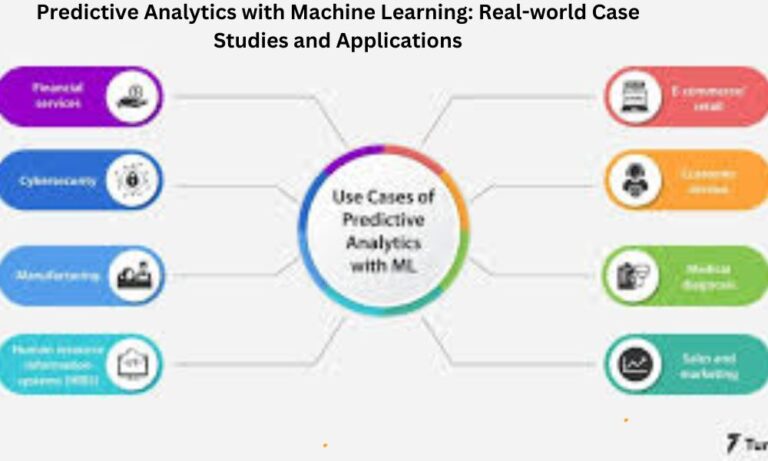Mastering Time Series Analysis with Machine Learning
Understanding time series analysis is becoming increasingly crucial for businesses and organizations across various industries. Time series analysis involves studying data points collected, recorded, or observed sequentially over time. With the integration of machine learning techniques, analyzing and forecasting time series data has become more accurate and efficient than ever before.
Time series analysis plays a pivotal role in understanding temporal data patterns, identifying trends, and making informed decisions based on historical data. With the advent of machine learning algorithms, the capabilities of time series analysis have been significantly enhanced, allowing for more accurate predictions and actionable insights.
Let’s go deeper into time series analysis with machine learning, exploring techniques for forecasting and uncovering patterns in time-dependent data.
Table of Contents
Fundamentals of Time Series Analysis
Time series data is characterized by its sequential nature, where each data point is recorded at regular intervals over time. Common applications of time series analysis include financial forecasting, stock market analysis, weather prediction, and demand forecasting in various industries. However, analyzing time series data poses unique challenges, including seasonality, trend detection, and handling irregularities.
Basics of Machine Learning for Time Series
Machine learning algorithms offer powerful tools for analyzing and forecasting time series data. Before diving into model building, it’s essential to preprocess the data adequately. This involves cleaning the data, handling missing values, and engineering relevant features based on time-based patterns.
Time Series Forecasting Techniques
Forecasting future trends and patterns in time series data is a critical task for many businesses and organizations. Traditional methods such as ARIMA have been widely used for time series forecasting. However, machine learning models like Long Short-Term Memory (LSTM) networks and Prophet by Facebook have gained popularity due to their ability to capture complex temporal dependencies.
Understanding Patterns in Time Series Data
Identifying patterns in time series data is essential for making accurate predictions and understanding underlying dynamics. Techniques such as autocorrelation and cross-correlation help in uncovering relationships between variables over time. Additionally, exploring trends and seasonality provides valuable insights into the behavior of time-dependent data.
Case Studies in Time Series Analysis
Real-world examples demonstrate the practical applications of time series analysis with machine learning. For instance, in the finance industry, predicting stock prices and market trends relies heavily on accurate time series forecasting models. Similarly, in the healthcare sector, analyzing patient data over time can help in disease prediction and early intervention strategies.
Challenges and Considerations
Despite the advancements in time series analysis techniques, several challenges need to be addressed. Handling outliers, dealing with noisy data, and adapting to evolving patterns pose significant hurdles in model development and deployment. Moreover, selecting the appropriate model architecture and hyperparameters requires careful consideration and experimentation.
Future Trends in Time Series Analysis and Machine Learning
As technology continues to evolve, the future of time series analysis holds immense potential. Emerging trends such as deep learning, reinforcement learning, and explainable AI are reshaping the landscape of temporal data analysis. Integrating these advanced techniques into existing frameworks promises to unlock new opportunities and insights across various domains.
Best Practices for Mastering Time Series Analysis
To excel in time series analysis with machine learning, practitioners should adhere to best practices and methodologies. Continuous learning, staying updated with the latest research, and collaborating with domain experts are essential for mastering this field. Building robust models requires a combination of domain knowledge, technical expertise, and a keen understanding of data dynamics.
Conclusion
In conclusion, mastering time series analysis with machine learning opens doors to a myriad of possibilities for data-driven decision-making.
By leveraging advanced algorithms and techniques, businesses can gain valuable insights into temporal data patterns, leading to improved forecasting accuracy and strategic planning.
As the demand for predictive analytics continues to grow, investing in time series analysis capabilities becomes imperative for staying ahead in today’s competitive landscape.
Frequently Asked Questions
What are the main challenges in time series analysis?
Time series analysis poses various challenges, including handling missing data, detecting outliers, and identifying complex patterns. Additionally, selecting appropriate forecasting models and tuning hyperparameters requires careful consideration and domain expertise.
How do machine learning models enhance time series forecasting?
Machine learning models offer superior performance in time series forecasting by capturing nonlinear relationships and temporal dependencies in the data. Algorithms like LSTM networks and Prophet by Facebook are specifically designed to handle sequential data, making them well-suited for time series analysis tasks.
What role does feature engineering play in time series analysis?
Feature engineering involves transforming raw data into meaningful features that capture relevant information for predictive modeling. In time series analysis, feature engineering techniques such as lagging variables, rolling statistics, and seasonal decomposition help in capturing temporal patterns and improving model performance.
How can businesses leverage time series analysis for strategic decision-making?
By analyzing historical data trends and forecasting future outcomes, businesses can make informed decisions regarding resource allocation, inventory management, and marketing strategies. Time series analysis provides valuable insights into market dynamics, customer behavior, and operational efficiency, enabling organizations to stay agile and responsive to changing market conditions.
What are some emerging trends in time series analysis and machine learning?
Emerging trends in time series analysis include the adoption of deep learning architectures, reinforcement learning techniques, and the integration of probabilistic programming for uncertainty estimation. Explainable AI and interpretable models are also gaining traction, allowing for more transparent and trustworthy predictions in real-world applications.



